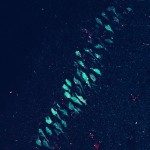Link to Pubmed [PMID] – 25244639
Link to DOI – 10.1016/j.psyneuen.2014.07.029S0306-4530(14)00310-2
2014 Dec; 50(): 252-63
Sex differences exist for stress reactivity as well as for the prevalence of depression, which is more frequent in women of reproductive age and often precipitated by stressful events. In animals, the differential effect of stress on male’s and female’s emotional behavior has been well documented. Crosstalk between the gonadal and stress hormones, in particular between estrogens and glucocorticoids, underlie these sex differences on stress vulnerability. We have previously shown that corticosteroid binding globulin (CBG) deficiency in a mouse model (Cbg k.o.) leads, in males, to an increased despair-like behavior caused by suboptimal corticosterone stress response. Because CBG displays a sexual dimorphism and is regulated by estrogens, we have now investigated whether it plays a role in the sex differences observed for emotional reactivity in mice. By analyzing Cbg k.o. and wild-type (WT) animals of both sexes, we detected sex differences in despair-like behavior in WT mice but not in Cbg k.o. animals. We showed through ovariectomy and estradiol (E2) replacement that E2 levels explain the sex differences found in WT animals. However, the manipulation of E2 levels did not affect the emotional behavior of Cbg k.o. females. As Cbg k.o. males, Cbg k.o. females have markedly reduced corticosterone levels across the circadian cycle and also after stress. Plasma free corticosterone levels in Cbg k.o. mice measured immediately after stress were blunted in both sexes compared to WT mice. A trend for higher mean levels of ACTH in Cbg k.o. mice was found for both sexes. The turnover of a corticosterone bolus was increased in Cbg k.o. Finally, the glucocorticoid-regulated immediate early gene early growth response 1 (Egr1) showed a blunted mRNA expression in the hippocampus of Cbg k.o. mutants while mineralocorticoid and glucocorticoid receptors presented sex differences but equivalent mRNA expression between genotypes. Thus, in our experimental conditions, sex differences for despair-like behavior in WT mice are explained by estrogens levels. Also, in both sexes, the presence of CBG is required to attain optimal glucocorticoid concentrations and normal emotional reactivity, although in females this is apparent only under low E2 concentrations. These findings suggest a complex interaction of CBG and E2 on emotional reactivity in females.

